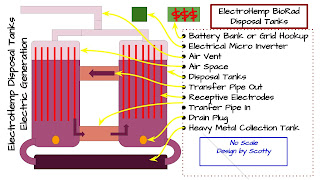Daily I read about a situation where the ElectroHemp Remediation and Prevention system would save both Business and Public money whether its EPA fines or by cities large and small that have to clean up the water before it is sold to the public.
This latest Iowa cattle feedlot if it would have incorporated a Buffer Zone and or Electrokinetics System the pollution could have been prevented.
U.S. Environmental Protection Agency, Region 7 - 11201 Renner Blvd., Lenexa, KS 66219
Serving Iowa, Kansas, Missouri, Nebraska, and Nine Tribal Nations
Iowa Cattle Feedlot Penalized for Clean Water Act Violations
Contact Information: Ben Washburn, 913-551-7364, washburn.ben@epa.gov
Environmental News
FOR IMMEDIATE RELEASE
(Lenexa, Kan., Dec. 9, 2020) - A judge has ruled in favor of the U.S. Environmental Protection Agency (EPA) and fined Tony and Joshua Brown of Armstrong, Iowa, a $76,000 penalty for violating the federal Clean Water Act. The brothers, doing business as Riverview Cattle, discharged pollutants from their cattle feedlot on 41 days into the East Fork of the Des Moines River, according to the judge’s ruling.
“We are encouraged by Judge Coughlin’s ruling,” said David Cozad, director of EPA Region 7’s Enforcement and Compliance Assurance Division. “Animal feedlot pollution is a serious threat to our nation’s waters and this ruling sends the right message that feedlot owners must comply with the law.”
Animal feeding operations that contain over 300 head of cattle and discharge pollutants through man-made conveyances to streams and rivers are required to obtain a Clean Water Act permit and take measures to minimize or eliminate discharges of pollutants in stormwater runoff from their facilities.
According to the court ruling, Riverview Cattle repeatedly discharged stormwater containing pollutants through an underground pipe that drained into the river, without having obtained a permit. Despite Riverview’s assertion that pollutants never reached the river, Administrative Judge Christine Donelian Coughlin upheld EPA’s observations, modeling, and other evidence, and found the feedlot liable for Clean Water Act violations.
Runoff from animal feeding operations regularly contains bacteria, ammonia, and oxygen-depleting substances that are toxic to aquatic life and potentially harmful to people. The Iowa Department of Natural Resources determined that the East Fork of the Des Moines River is impaired for recreational use due to high levels of bacteria, in part resulting from runoff from feedlots.
# # #
Learn more about EPA Region 7: www.epa.gov/aboutepa/epa-region-7-midwest
Connect with EPA Region 7 on Facebook: www.facebook.com/eparegion7
Follow us on Twitter: @EPARegion7




































